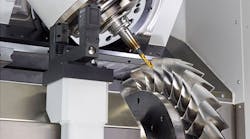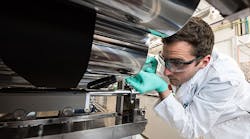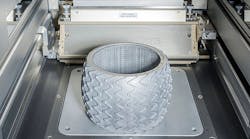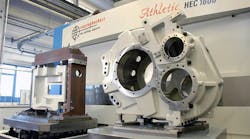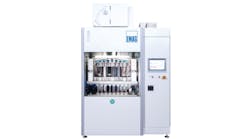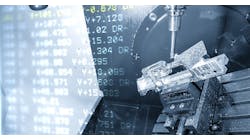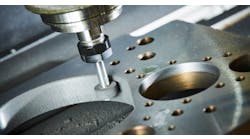The coalition of European machine-tool builders’ trade association, CECIMO, issued a generally positive forecast for 2017, pegging machine-tool production in the region to increase 4% over last year and to surpass €25 billion ($27.9 billion.)
The Brussels-based association includes trade associations representing 1,500 companies in 15 countries, more than 80% of which qualify as small and mid-sized enterprises (SMEs.) These producers account for more than 99% of all machine-tool production in Europe and 30% worldwide.
CECIMO noted the improvement it forecasts for this year will play out in the context of a “feeble international environment”: this is notable because most European developers and suppliers of machine tools and related products and technologies rely heavily on exports outside the region, particularly to Asia and the Americas.
Exports from the European machine tool industry declined 3% year-over-year in 2016, but in fact this result was better than the global average, CECIMO noted, as the global machine-tool sector declined by about 7%.
In addition, while global machine-tool consumption decreased 6-8% year-over-year in 2016, machine-tool manufacturers within the CECIMO countries exported machine tools with a total estimated value of €18.3 billion ($20.4 billion) in 2016. Forecasting 2017 exports is difficult, it warned, but offered that if global trade regulations remain in place CECIMO exports are likely to grow to €19 billion ($21.2 million.) Among the reasons for this are, according to Starrag AG’s Dr. Frank Brinken, are that “digitization and future proven high-quality standards increase the attractiveness of the European machine-tool portfolio in foreign markets.”
As for trade within the EU, machine tool demand will be shaped by equipment modernization previously postponed capital investments moving forward. Total European consumption is seen exceeding €18 billion euro ($20.1 million) this year
At this level of demand, the EU would represent 26% of global machine-tool consumption, and expand the regional consumption rate by nearly 3.5%.
CECIMO also issued a statement of policy on digital manufacturing and industrial connectivity — and the need for tax and regulatory policies that will encourage greater regional investment in manufacturing operations. This would include lenient regulations on and a “top down approach” data-access rights. “Access to data generated by machines is defined by bilateral contracts between businesses, which seems to work sufficiently well for now,” according to CECIMO.
It also offered the opinion that “the data economy” cannot be built at a national level, and so the EU should encourage free flow of data across the region, and expand efforts to promote data exchange between countries in and outside the region.
“We are glad to see that European policy-makers put connectivity in industrial context at the forefront, and that they foresee a dialogue with trade associations for a EU framework on machine-generated data,” conceded CECIMO director general Filip Geerts. “Yet, we remind policy-makers that industrial data mirrors processes, products, and systems, so it’s context-sensitive and often contains trade secrets.
“The goal is not to implement new premature rules, but rather, to increase our companies’ technical and organizational capacity. Together with policy-makers we should generate a common understanding fit for the digital era,” Geerts concluded.
